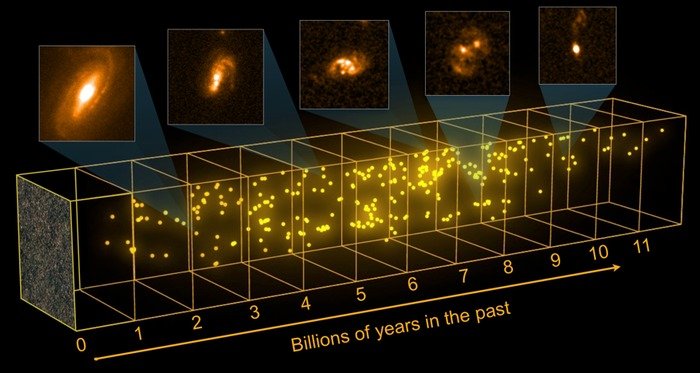PARIS, Dec. 4 (UPI) -- European astronomers say observations of hundreds of previously unseen galaxies show extraordinary high star-formation rates across the history of the universe.
The European Space Agency's infrared Herschel space observatory has provided images of hundreds of so-called starburst galaxies that give birth to hundreds of solar masses' worth of stars each year in short-lived but intense events, they said.















